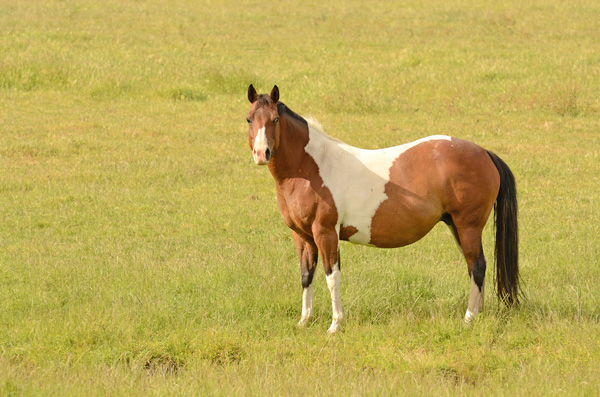
The experts from North Carolina State University College of Veterinary Medicine have shared the following information about shelly feet in horses.
Horses can have cracks that come up from the bearing surface of the hoof, flare out, and have separations. Generally, these horses have soft, unhealthy hooves. This is referred to as “shelly feet.” The number one problem in these horses is that they are experiencing too much moisture and/or the recurrent theme of severe moisture and with already poor quality feet. This will traumatize the hooves enough to make poor feet poorer!
Tips for Managing Shelly Feet
- Keep the feet in a medium state of moisturizing all the time, so they are not too dry or too wet. Horses that are in desert climate need a moisturizing product of water and lanolin. In dry climates, it is helpful to allow “controlled” moisture around the water troughs. In moist environments of the southeast, keep the horse in drier paddocks or stalls bedded with pine shavings when the dew or mud is heavy. Fly and manure control is helpful in and around small turnout areas to reduce the stomping of feet.
- When shoeing the horse, clean out separations and pack disinfecting material in those separations before the shoe is nailed to the hoof. Also continue to help reduce any flaring of the feet in a balanced way by making sure there is equal shoe on either side of the foot and there is a straight line from the coronet band down to the shoe. (No dishing of the hoof as seen from any viewing position.) In some cases this may even require compressing the shoe or making the shoe smaller than what it would normally be to fit that “pie plate” type foot.
- Make sure the shoeing interval is determined and stick with the time frame. Many of these horses come to a veterinarian or a new farrier because they are losing shoes. So if the horse keeps shoes on four to five weeks, don’t let them go 6 or 7 weeks.
Horses with shelly feet can have intermittent lameness, more susceptible to bruising and corns and have difficulty maintaining shoes. They often have other abnormal foot conformations, and radiographs showing hoof positions in relation to the shoes can be very helpful.
Owners and caretakers need to understsand it can take several months to regain some decent hoof wall. It does depend on how long the conditions have been bad for the horse. Some foot supplements maybe helpful, but they cannot replace normal feet, especially in horses living in wet environmental conditions. Good regular shoeing is required.


